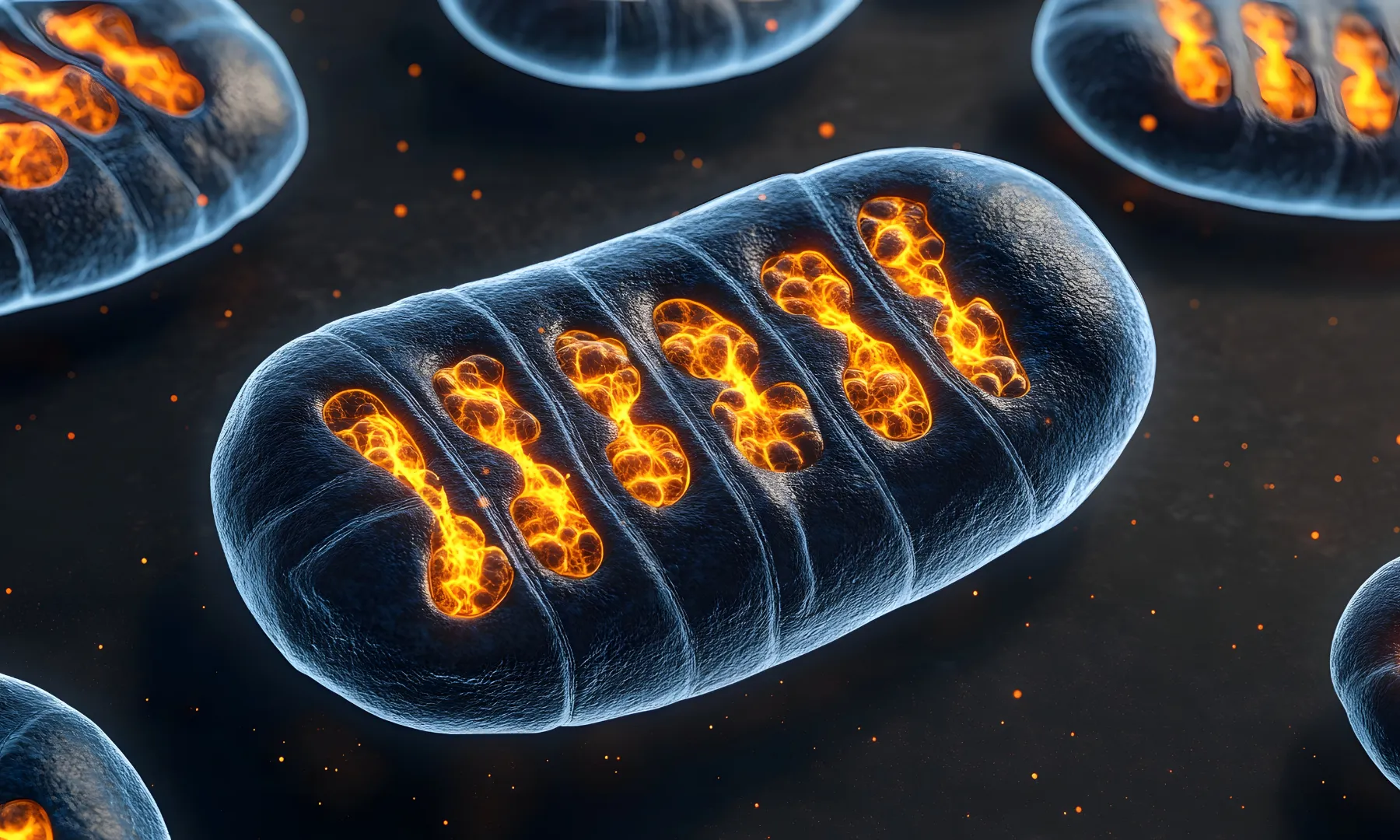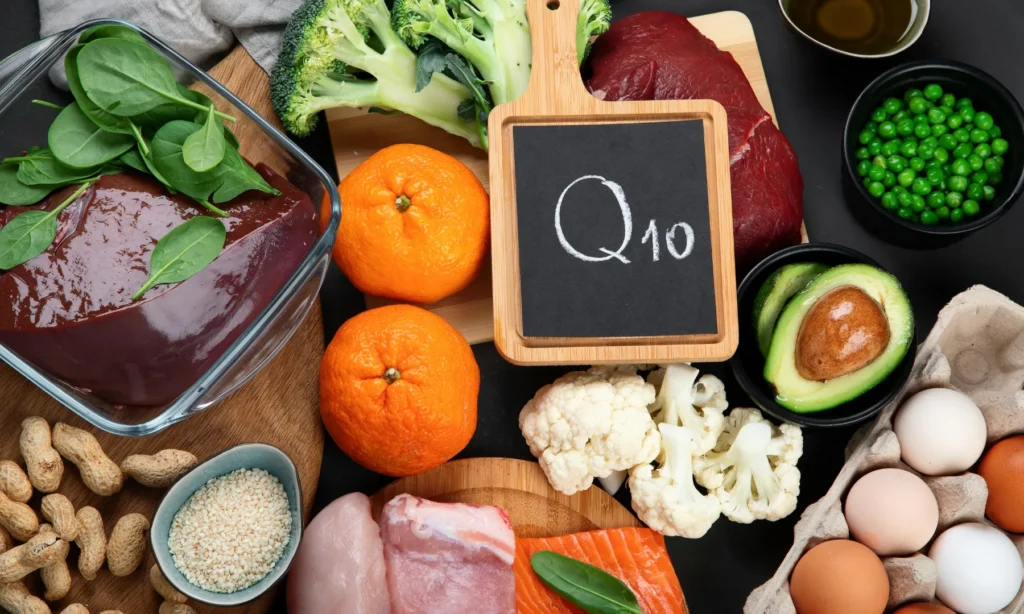
Here’s a strange-but-true clinic moment: two patients walk in with the same complaint, “I hit a wall by 2 p.m.,” and leave with wildly different plans. One gets riboflavin and CoQ10. The other? More protein at breakfast, magnesium before bed, and a gentle nudge on sleep timing. Same indicator, different wiring. That’s the magic, and the responsibility, of mitochondrial nutrigenomics: the science of decoding how mitochondrial genes interact with nutrients to shape energy output and resilience.
If you’re seeing fatigue, stubborn weight, or insulin resistance that doesn’t budge even with “perfect” macros, look under the hood. Energy metabolism isn’t just calories in, calories out: it’s mitochondria turning nutrients into ATP with the help of genes and their favorite cofactor sidekicks. Understanding those interactions transforms routine nutrition into personalized nutrition, where interventions align precisely with each client’s genomic profile.
In this guide, you’ll connect the dots between mitochondrial genes and nutrition, explore real-world clinical applications of nutrigenomic testing, make sense of SNP reports without overpromising, and walk away with clear, clinic-ready moves. We’ll peek at metabolomics, talk safety (because ethics matter), and share a few real-world wins and near-misses you can learn from.
Ready to tailor energy at the source? Let’s crack it open.
Key Takeaways
Mitochondrial nutrigenomics turns generic plans into personalized energy support by matching patient SNPs with nutrient cofactors to address fatigue, weight issues, or insulin resistance.
Map key genes (MT-ND1/5, UCP2, COQ2, SOD2) and support them with riboflavin, niacin, magnesium, and CoQ10, then confirm with metabolomics like lactate:pyruvate and NADH/NAD+.
Start with foundations—25–35 g protein at breakfast, hydration, an active B-complex, and nightly magnesium—before layering CoQ10, carnitine, ALA, or antioxidants based on clinical clues and tolerance.
Dose conservatively, track 4–12 week outcomes (energy ratings, RPE, heart rate recovery), and watch interactions such as CoQ10 with warfarin while adjusting by genotype and response.
Explain that SNPs signal tendencies, secure consent and data privacy, and prioritize real-time metabolomics over genotype when they conflict for ethical mitochondrial nutrigenomics in practice.
Table of Contents
Understanding Mitochondrial Nutrigenomics and Energy Regulation
Think of mitochondria as tiny power plants humming in each cell, converting carbs, fats, and amino acids into ATP, the body’s expendable energy.
Mitochondrial nutrigenomics examines how nutrients interact with genes involved in these power plants, shaping how efficiently you generate energy, buffer oxidative stress, and bounce back from metabolic hits.
For practice, this means your nutrition plans can move from “healthy in general” to “precisely helpful for this person.” We’re talking targeted tweaks that support oxidative phosphorylation, keep reactive oxygen species (ROS) in check, and protect mitochondrial DNA (mtDNA) as patients age.
Why it matters now: lifestyle-related metabolic conditions, diabetes, obesity, and cardiovascular issues often ride on wobbly energy metabolism. Personalized nutrition anchored to mitochondrial genes can tighten the system. It’s not hype: it’s a pragmatic way to reduce friction in ATP production and restore metabolic resilience.
Core playbook:
Map genetic contributors to energy metabolism (e.g., MT-ND1, MT-ND5, UCP2, COQ2, SOD2), then match them to nutrient supports.
Layer in nutrient cofactors for enzymes that run the electron transport chain (riboflavin, niacin, magnesium), plus mitochondrial antioxidants when oxidative stress flags high.
Cross-check with metabolomics, lactate, pyruvate, NADH/NAD+, so your plan reflects what’s happening today, not just what the genome suggests in theory.
A quick story. A high-achieving teacher came in with “I can’t wake up my brain.” Labs were fine. Her mitochondrial nutrigenomic testing lit up UCP2 and SOD2 variants. We dialed in protein timing, added a B2-heavy multi, and titrated CoQ10. Two weeks later, she emailed: “My 3 p.m. slump ghosted me.” Not a benefit, just good matching of nutrient cofactors to energy genes.

The Role of Mitochondria in Nutrient Metabolism
Mitochondria convert macronutrients into ATP through a beautiful relay: glycolysis hands off to the TCA cycle, which fuels the electron transport chain (ETC). When the relay drops the baton, you feel it: fatigue, brain fog, exercise intolerance, even insulin resistance.
ATP Production and Gene Regulation
Mitochondrial genes such as MT-ND1 and MT-ND5 encode Complex I subunits: nuclear genes (e.g., NDUFS7) pitch in too. Variants here can trim ATP yield or make it “cost” more nutrients to produce the same amount of energy.
Nutrient cofactors keep the machinery moving. Riboflavin (B2) becomes FAD for Complex II and fatty acid oxidation. Niacin (B3) fuels NAD+ for Complex I handoffs. Magnesium stabilizes ATP itself, useful when cramps, migraines, or palpitations hint at low intracellular Mg.
Clinically, when you see “battery at 30% by noon,” read it as a mismatch between demand and mitochondrial capacity. Interpreting nutrigenomic reports through the lens of nutri-helpers, those cofactors often turn the lights back on.
Mitochondrial DNA: Unique Vulnerabilities
MtDNA is maternally inherited, sits near the ETC where ROS are born, and lacks protective histones. That means it’s easier to ding and harder to repair.
What does that look like in practice? The patient who “ages” faster under stress, or the runner with inexplicable post-exertional malaise. Mitochondrial antioxidants and steady glycemic control reduce ROS-induced damage, protecting genome integrity and supporting energy homeostasis over the long haul.
Pro Tip: When ferritin’s high and oxidative stress markers creep up, check in on antioxidant status and iron intake. Too much iron can be like tossing sparks into a dry forest, more ROS, more mtDNA wear.
Gene–Nutrient Interactions in Energy Pathways
Your goal isn’t to memorize every SNP; it’s to spot leverage points where nutrients change outcomes—three big levers: CoQ10, B-vitamin status, and antioxidant capacity.
Coenzyme Q10 and Mitochondrial Function
CoQ10 shuttles electrons between Complex I/II and III and doubles as an antioxidant in mitochondrial membranes. Variants in COQ2 (biosynthesis) or MT-ND genes can blunt efficiency. Clinically, low CoQ10 status often shows up as “can’t recover,” statin-related fatigue, or poor exercise tolerance.
Anecdote: A 48-year-old nurse on a moderate-intensity statin felt wiped even though pristine lipids. SNPs suggested COQ2 inefficiency. We titrated ubiquinol (the reduced form) and nudged dietary sources such as sardines, beef, and avocado. By week three, her evening walks came back. Small hinge, big door.
Evidence snapshot: Multiple peer-reviewed trials support CoQ10 for fatigue and mitochondrial disorders: response varies with genotype and baseline status. Start low, go slow, and track subjective energy plus heart rate recovery.
Sample dosing ranges by clinical context and genotype tendencies:
Genotype/Context | Typical Form | Starting Dose | Titrate To |
|---|---|---|---|
Suspected COQ2 inefficiency | Ubiquinol | 50 mg with food | 100–200 mg/day |
MT-ND variants + fatigue | Ubiquinol or Ubiquinone | 100 mg/day | 100–300 mg/day |
On statins, low energy | Ubiquinol | 100 mg/day | 200 mg/day |
Watch for interactions with anticoagulants. And remember: more isn’t always more; focus on absorption and consistency.
B-Vitamins and Electron Transport Chain Efficiency
B2, B3, and B6 are the components of the oxidative phosphorylation system. B2 supplies FAD: B3 feeds NAD+: B6 supports amino acid metabolism and transsulfuration. MTHFR and NDUFS7 polymorphisms can tilt redox balance: even “normal” labs can mask functional needs.
What works in the real world:
Use an active B-complex with riboflavin-5′-phosphate and niacinamide to support redox without flushing.
For patients with methylation sensitivity, begin with smaller doses of methyl donors; layer in folate once they stabilize.
Pair B vitamins with protein at breakfast, think eggs or Greek yogurt, so substrate and cofactors arrive together.
Antioxidants and Mitochondrial DNA Protection
Endogenous defenses, glutathione, SOD2, and GPX1 need raw materials. Exogenous support, ALA, NAC, vitamins C and E, buffers ROS and helps protect mtDNA.
UCP2 deserves a special nod. It can reduce ROS leakage by slightly uncoupling the proton gradient. Specific UCP2 polymorphisms correlate with fatigue under stress; those are the folks who get tired after a single poor night’s sleep.
Handy cheat sheet:
Nutrient | Primary Mito Target | Gene Tie-In | Clinical Clue | Practical Move |
|---|---|---|---|---|
CoQ10 | ETC electron shuttle | COQ2, MT-ND | Post-exertion crash | 100–200 mg ubiquinol with fat |
Alpha-lipoic acid (ALA) | Redox cycling, PDH | SOD2, UCP2 synergy | Neuropathy, insulin resistance | 200–600 mg/day with meals |
NAC | Glutathione precursor | GPX1 support | Brain fog + chemical sensitivity | 300–900 mg/day: hydrate well |
Vitamin C + E | Membrane protection | SOD2/GPX systems | High oxidative stress labs | C 500–1000 mg: mixed tocopherols |
Magnesium | ATP stability | ATP-dependent enzymes | Cramps, palpitations, poor sleep | 200–400 mg glycinate nightly |
When in doubt, match indicator patterns with metabolomics and start conservatively. You can always build.

Clinical Interpretation for Practitioners
Reading a mitochondrial SNP report isn’t about finding “bad genes.” It’s about mapping friction points in nutri-enzymatic pathways and easing the load.
Mitochondrial SNP Testing Panels
You’ll see recurring players: UCP2, MT-ND1, COQ2, SOD2, plus nuclear ETC helpers. Platforms vary. Many clinicians use GenomicInsight for straightforward reports, then run data through Opus23 Explorer to stress-test hypotheses and generate nutrition notes.
Tips for interpretation:
Don’t assist SNPs in isolation. Cross-check with signs, diet diaries, sleep, movement, and meds (statins, PPIs, metformin).
If UCP2 flags and fatigue are front and center, think ROS control and mild uncoupling support, balanced antioxidants, stable blood sugar, not aggressive stimulants.
If MT-ND1 or NDUFS7 light up, prioritize riboflavin and NAD+ support, then assess lactate/pyruvate for Complex I efficiency.
Ethics hat on: Explain that SNPs indicate tendencies, not destiny. Set expectations for a 6–12 week trial window with measurable outcomes.
Addressing Fatigue Through Nutrigenomics
Fatigue is a bucket with holes: sleep, thyroid, iron, mood, and infection. Once you’ve ruled those out or treated them, mitochondrial support shines.
A simple clinical sequence I lean on:
Foundation: protein distribution (25–35 g at breakfast), hydration, a B-complex, and magnesium glycinate at night.
Targeted add-ons: CoQ10 + carnitine if the history screams “low output,” ALA if insulin resistance or neuropathic tingling lurk, and gentle adaptogens when stress keeps stomping the gas.
Checkpoints: energy ratings, RPE during walks, and changes in resting heart rate. If nothing moves by week four, reassess genetics and metabolomics.
Quick case: Post-viral fatigue, mid-30s nurse, sensitive to meds. SNPs showed MTHFR and SOD2 variants; metabolomics showed elevated lactate: pyruvate. We used riboflavin, niacinamide, low-dose ubiquinol, and mitochondrial antioxidants. Improvement? Better morning clarity by week two, stable by week eight. We didn’t chase perfection; we celebrated function.
Integrating Metabolomics Insights
Genetics points to the blueprint: metabolomics shows today’s wiring.
Go-to markers:
Lactate: pyruvate ratio, if high, consider Complex I drag: think riboflavin + NAD(H) support.
NADH/NAD+ balance hints at redox strain and B3 needs.
Organic acids (e.g., succinate, fumarate), stall points in the TCA.
My workflow in plain English: if a SNP says “this pathway may run slow,” and metabolomics says “yep, it’s backing up,” you’ve got a green light for a targeted protocol. If they disagree, prioritize the metabolomics, adjust lifestyle, and retest.
Safety and Ethical Practice in Mitochondrial Nutrigenomics
Two guardrails keep this work honest: evidence and consent.
Evidence hierarchy: SNP associations range from strong to speculative. Make it clear when you’re using best-available evidence versus gold-standard data. Track outcomes and be ready to pivot.
Dosing discipline: Start low, especially with methyl donors and redox-active agents like ALA, and build up based on tolerance. Watch meds. CoQ10 can alter warfarin response: NAC may shift mucolytic needs.
Special populations: Pregnancy, pediatrics, and the elderly need gentler steps and tighter supervision.
Data privacy: Store reports securely, obtain informed consent, and set expectations on how data will be used. Avoid uploading raw data to tools without clear privacy policies.
No scare tactics, no genetic determinism. Just transparent, personalized care.
Conclusion: Integrating Mitochondrial Nutrigenomics into Clinical Practice
Precision nutrition isn’t the garnish, but rather, it’s the foundation. When mitochondrial genes interact with the appropriate nutrient cofactors and lifestyle patterns, energy metabolism stabilizes. Patients don’t just see it in lab data, they feel it: clearer mornings, fewer afternoon crashes, better recovery, and a return of that steady drive they’d forgotten was possible.
Integrating mitochondrial nutrigenomics into clinical work isn’t about chasing every SNP or overanalyzing data points. It’s about learning to recognize the handful of leverage points that truly shift energy systems: riboflavin, niacinamide, magnesium, CoQ10, and tailoring interventions around them. The goal is precision without paralysis: plans grounded in biochemistry, refined through observation, and personalized through the patient’s lived experience.
Metabolomics then brings the reality check, showing whether the pathways you’ve targeted are actually responding in the body in front of you. Combine that with strong clinical reasoning, explicit consent, and measured claims, and you’ve got a model that’s ethical, evidence-informed, and sustainable.
For practitioners ready to go beyond surface-level testing and translate genomics into practice, the Integrative Genomics Specialist Program by Elite Gene Labs provides an advanced, clinician-centered pathway. It equips you to interpret complex genomic data, design nutrient-driven interventions, and apply precision nutrition ethically and effectively in real-world settings.
Frequently Asked Questions
What is mitochondrial nutrigenomics and how does it influence energy and fatigue?
Mitochondrial nutrigenomics explores how nutrients interact with genes that regulate energy production and oxidative balance. By aligning nutrient cofactors such as riboflavin (B2), niacin (B3), magnesium, and CoQ10 with gene variations like MT-ND1 and UCP2, individuals can often improve mitochondrial efficiency, reduce fatigue, and enhance overall energy metabolism.
Which genes and nutrients play key roles in mitochondrial nutrigenomics for ATP production?
Core genes include MT-ND1, NDUFS7, COQ2, UCP2, and SOD2, each affecting how mitochondria generate ATP and manage oxidative stress. Nutrients such as riboflavin (FAD), niacin (NAD+), magnesium, and CoQ10 support these pathways. Optimizing these nutrients based on genetic and metabolic findings helps restore efficient energy output.
How can genetic testing and metabolomics work together in mitochondrial nutrigenomics?
Genetics reveal tendencies, while metabolomics shows what’s happening now. For instance, if MT-ND variants suggest Complex I strain and lab markers show low NAD+/NADH balance, focus on riboflavin, niacinamide, and CoQ10. When results conflict, prioritize current metabolic data, adjust diet and sleep, and retest after 6–12 weeks for accuracy.
Is mitochondrial nutrigenomics safe for clinical use?
Yes, when applied responsibly. Clinicians should use evidence-based nutrient ranges, monitor medication interactions, and begin with conservative dosing. For example, CoQ10 may influence warfarin, while ALA or NAC can alter redox balance. Ethical practice includes informed consent, secure genetic data handling, and measurable outcomes within defined timeframes.
What foods naturally support mitochondrial function alongside nutrigenomic strategies?
Choose foods rich in mitochondrial cofactors: lean proteins, leafy greens, dairy, legumes, and nuts for B vitamins and magnesium; sardines and beef for CoQ10. Maintain steady blood sugar, consistent sleep, hydration, and moderate activity. These habits complement personalized mitochondrial nutrigenomic protocols.
How can mitochondrial nutrigenomics support patients with chronic fatigue or poor recovery?
By identifying and supporting weak points in mitochondrial energy pathways, practitioners can tailor nutrition and supplementation for better ATP output. Addressing UCP2 or SOD2 variants with antioxidants, or COQ2 variants with CoQ10, can reduce oxidative strain, improve endurance, and enhance post-exercise recovery.
Can mitochondrial nutrigenomics guide personalized nutrition plans?
Absolutely. It connects gene activity with individual nutrient needs, allowing clinicians to customize interventions. For example, someone with MT-ND inefficiency may benefit from riboflavin and niacinamide, while others with redox imbalance may need more antioxidants. This is personalized nutrition rooted in molecular insight.
How long does it take to see results from mitochondrial nutrigenomic interventions?
Most individuals notice changes in energy, focus, or recovery within 6–12 weeks of starting a targeted plan. Regular follow-ups, lab monitoring, and minor nutrient adjustments help maintain progress and prevent plateaus. Patience and data-driven refinement are key for sustainable outcomes.
What training is available for practitioners who want to apply mitochondrial nutrigenomics?
Clinicians can advance their skills through the Integrative Genomics Specialist Program by Elite Gene Labs. The program covers genomic testing interpretation, nutrient mapping, and ethical implementation—equipping healthcare professionals to apply mitochondrial nutrigenomics safely and effectively in personalized nutrition practice.
References:
López-Gallardo, E., et al. (2024). Mitochondrial complex I subunit MT-ND1 mutations affect disease phenotypes in patients with mitochondrial disorders. Frontiers in Genetics, 15, Article 1348792. https://doi.org/10.3389/fgene.2024.1348792
Wong, L.-J. C. (2007). Pathogenic mitochondrial DNA mutations of muscle coenzyme Q10 deficiency. Journal of Medical Genetics, 44(6), e75. https://doi.org/10.1136/jmg.2006.047738
Ruiz-Moreno, C., et al. (2019). UCP2 gene polymorphisms in obesity and diabetes, and the role of UCP2 in energy metabolism. FEBS Letters, 593(16), 2195–2205. https://doi.org/10.1002/1873-3468.13546
Ganapathy, P. S., et al. (2017). Riboflavin responsive mitochondrial dysfunction in neurodegenerative diseases. Frontiers in Neuroscience, 11, Article 276. https://doi.org/10.3389/fnins.2017.00276
Pirinen, E., et al. (2020). Niacin cures systemic NAD+ deficiency and improves muscle performance in adult-onset mitochondrial myopathy. Cell Metabolism, 31(6), 1109–1123.e5. https://doi.org/10.1016/j.cmet.2020.04.008
Hernández-Camacho, J. D., et al. (2021). Metabolic targets of coenzyme Q10 in mitochondria. Antioxidants, 10(5), Article 684. https://doi.org/10.3390/antiox10050684

